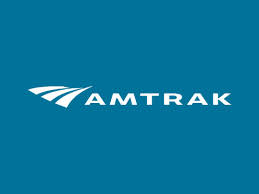WASHINGTON — A Federal appeals court ruling Friday will allow Amtrak and the Federal Railroad Administration to revive on-time performance metrics, Politico is reporting.
The 2-1 ruling by the U.S. Court of Appeals for the District of Columbia Circuit is the latest ruling in a long-running court battle that has already seen the matter go to the Supreme Court once before being sent back to lower courts for resolution. The legal battle began when the Association of American Railroads brought suit in 2011, contesting Amtrak’s right to be involved in the rulemaking process for on-time performance. [See “Freight Railroads sue over Amtrak on-time provisions,” Trains News Wire, Aug. 24, 2011].
Most recently, the metrics were rejected in a decision by the Eighth U.S. Circuit Court of Appeals in July 2017 which said the Surface Transportation Board had “exceeded its authority” in stepping in to attempt to measure performance. [See “Appeals court rejects on-time performance standards,” Trains News Wire, July 14, 2017]
Amtrak applauded the decision in a statement on Friday afternoon: “We are pleased with the decision by the Court of Appeals allowing for the implementation of on-time performance metrics. Since this law was first overturned, we have seen continued deterioration of on-time performance over freight railroads driven primarily by freight train interference. This decision will allow the FRA to set on-time and other performance standards that would help ensure that our customers and the American taxpayer get the high-quality passenger service they deserve.”
The AAR could petition for a rehearing by the full court or take the decision to the Supreme Court, according to Politico.
This is a developing story. Follow Trains News Wire for more information as it becomes available.














An often forgotten fact is that Amtrak was established to relieve the railroads of the burden of operating passenger trains and all the expenses that go with them, including capital, maintenance and operating costs. While there are some costs involved with accommodating the passenger trains on the road, they are minimal in the scheme of things. There is a little wear and tear on the rails and, in some cases, slight delays to freight operations, but little else. If a railroad line sees only a dozen or so trains daily, the passenger train shouldn’t be such a burden on the line. If the line sees 80-100 trains a day, that may be a different matter. If Amtrak is willing to pay a fair toll for use of the railroad, then Amtrak should also have some say in it’s timely performance. After all, the railroad is still being relieved of the major cost burden of running passenger trains.
They take money from Amtrak so the railroads need to let Amtrak run reasonably on time.
Will be interesting to see how this plays out eventually, given that the railroads can’t even run their own trains on schedule.
CE MC – That’s why 99% of lawyers make the other 1% look bad.
More years of ‘My lawyer can beat your lawyer’. Nobody will win but each sides lawyers. Nothing to see here, keep moving.